Rome, the Eternal City, the cradle of Western civilization and capital of Christianity. A magical city, a concentration of art, history, architecture, a true open-air museum where, wherever you look, you can admire the traces of a millenary history and culture, the foundations of its being always contemporary with an impetus towards the future.
A millennia-long history that you can perceive at every corner of this splendid city, with an endless array of wonders that you absolutely must visit without a second thought. Enjoy the dozens of attractions that Rome offers in an entirely innovative, intelligent, and comfortable way, without having to worry about long lines and transportation. Here, you will find all the necessary information to visit the city of Rome in a smart manner, but now let's discover the 10 wonders to see in Rome.
Find out more about Visit Rome Pass10. The Trevi Fountain
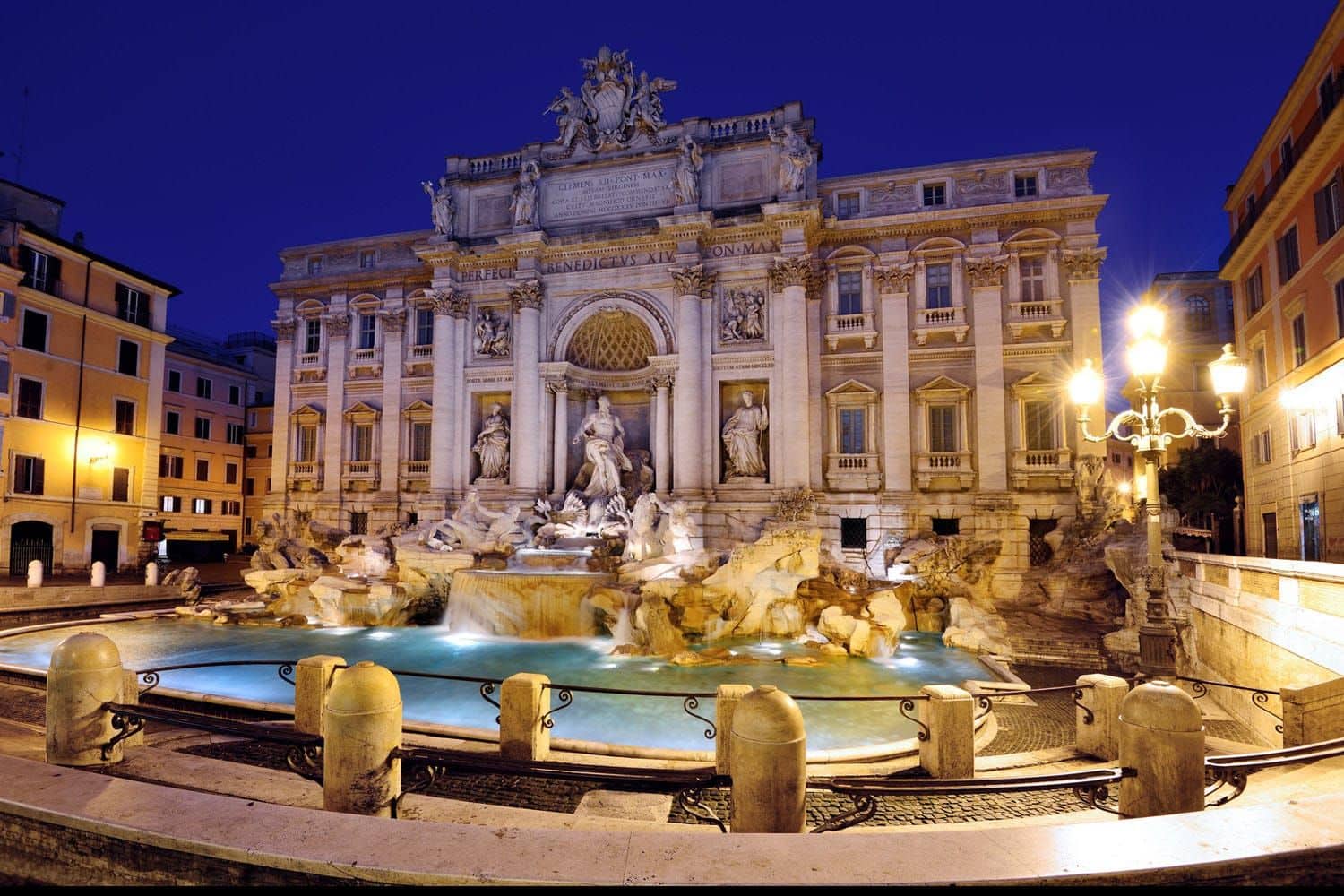
The Trevi Fountain, the terminal of the Virgin Aqueduct, the only one of the ancient aqueducts still in use today, is the most famous of the Roman fountains. Its name derives from regio Trivii, referring to the confluence of three streets in the square, or from the triple water outlet of the original fountain.
The creation of the current Trevi Fountain is due to Pope Clement XII who, in 1732, held a competition in which the greatest artists of the time participated. The architect Nicola Salvi's design was chosen from the various projects submitted. In 1762 it was completed by Giuseppe Pannini.
Because of its evocative and romantic atmosphere, the Trevi Fountain has served as a beautiful backdrop for many Italian films. The most famous scene is from director Federico Fellini's film "La Dolce Vita", in which a provocative Anita Ekberg in a long black evening dress calls out to Marcello Mastroianni: "Marcello, come here!" as she plunges into the sparkling waters of the fountain.
One key tip, before you leave Rome don't forget to toss a coin into the fountain, you'll be back in Rome, as the custom goes! If, on the other hand, you're looking for a bit of romance or Italian love, you'll need to toss a second and third coin to make sure the wedding bells are ringing soon!
Make a wish before leaving Rome!
"Just the fountains are enough to justify a trip to Rome”
9. Spain Square
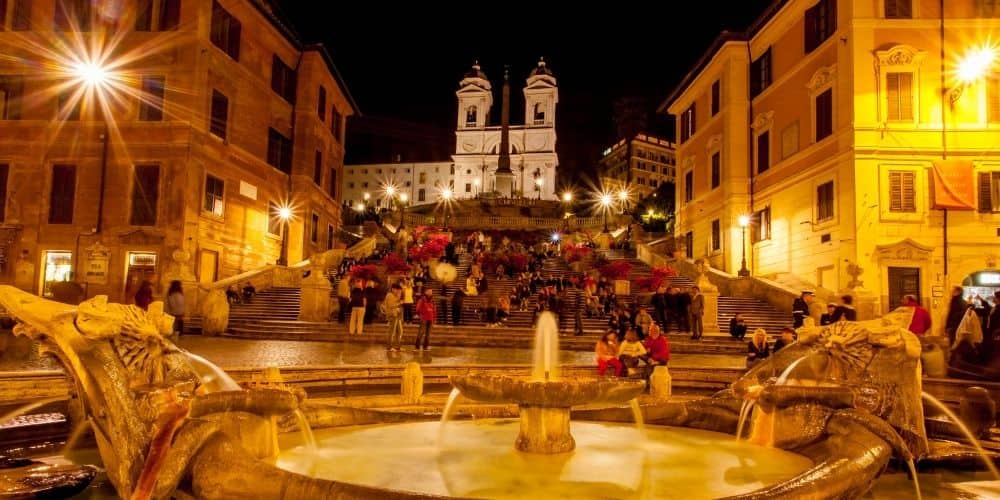
The romantic center of 19th-century Rome already played a very important commercial role in the 15th century due to the presence of many hotels and houses inhabited by foreigners, drawn to this area by the representations of the Spanish and French governments. Spain Square is one of the most famous squares in Rome.
It owes its name to the Spanish Palace, the seat of the Iberian State Embassy to the Holy See. Under the direction of the Roman architect Francesco De Santis, the Scalinata di Trinità Dei Monti was built, it is a scenographic link between the slopes of the Pincio, dominated by the Church of the Holy Trinity, and the square below, which was a meeting place for all citizens, still known as "the living room of Rome".
In the centre of the square is the fountain known as the "Barcaccia" by Pietro Bernini, father of Gian Lorenzo. The term "Barcaccia" refers to the boats used on the Tiber in the nearby port of Ripetta.
Today, the floral tribute in Piazza di Spagna, always accompanied by a Marian prayer by the Pope, is one of Rome's best-loved and most popular religious ceremonies.
Elegance is the main characteristic of the square.
It is no coincidence that high fashion brands have chosen to locate their stores near the square, making it an ideal location for photographic and film sets.
The former home of famous poets such as John Keats and Percy Bysshe Shelley has always been the centre of Rome's cultural and tourist life.
8. The Borghese Villa
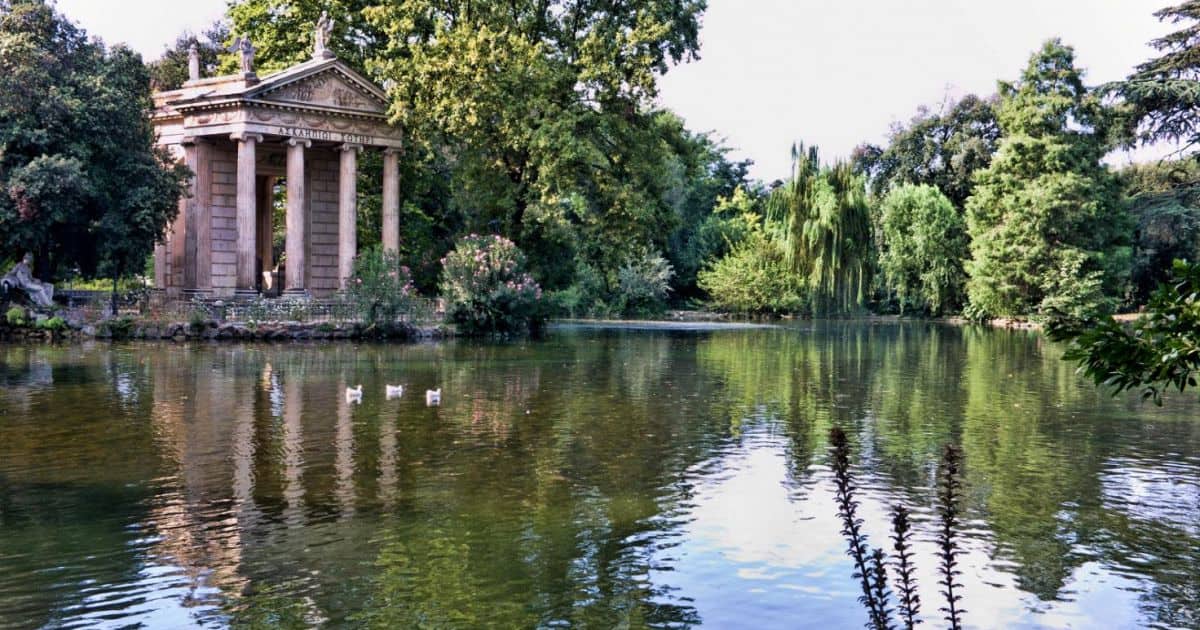
Villa Borghese is Rome's most famous city park and is a true oasis of relaxation, a perfect combination of nature, entertainment, sport, culture.
It is one of the richest Roman villas in terms of art and landscape. It contains buildings, sculptures, monuments, fountains, the work of illustrious Baroque, neoclassical and eclectic artists, surrounded by ancient trees, ponds, large open spaces, offering a journey back in time between English and Italian gardens, villas, groves, statues, but also the possibility of visiting museums. This is why the villa is known as the "Park of Museums".
Walking along with the Lake Garden, it is possible to rent boats and admire, in the middle of the lake, the Temple dedicated to Aesculapius and, along the banks, the Sundial and the Fountain of the Satyr Family.
Beautiful and romantic are the Secret Gardens, the Casino Borghese del Vasanzio, in which the Galleria Borghese is located, the Fortezzuola, which today houses the Museo Canonica, the Etruscan Museum of Villa Giulia and the National Gallery of Modern and Contemporary Art and the Parco Dei Daini.
A cultural centre through the ages, it has been portrayed by famous artists and has inspired famous music and important pages of literature. Even today, Villa Borgese reveals the splendour of the past in the glimpses of its park.
Villa Borghese: find out about the attractions in the area!7. The Pincio Hill

Rome looks unforgettable when seen from the Pincio Terrace, a large public park designed by Giuseppe Valadier in 1834 and one of the city's favourite promenades, it is considered the most beautiful view in Rome.
The Pincio promenade located between Piazza del Popolo, Villa Medici, the Muro Torto, with a direct connection to Villa Borghese through Via Delle Magnolie, was conceived by the Napoleonic administration, installed in Rome since 1810, to satisfy multiple urban and social needs. It was built on the hill of the same name, which was already the site of gardens in Roman times. Originally, the Pincian Hill was called "Colle Dei Giardini", later it was the seat of the Gens Pinciana, from which it derives its modern name. Until the middle of the 20th century, it was the true city park, the garden of the Roman people, who could enjoy countless events and shows, from fireworks displays to concerts to today's musical events. The majestic dome of St. Peter's dominates the horizon, Monte Mario rises to the right, the Quirinale to the left, in the distance, high up on the Janiculum, you can see the equestrian monument of Garibaldi. It is still a popular place to walk and Piazzale Napoleone, which overlooks Piazza del Popolo, is one of the most picturesque spots, considered a masterpiece of perspective and a favourite of those who like to look down on Rome from above.
6. St Peter’s Basilica

St. Peter's Basilica in the Vatican, officially the Papal Archbasilica Major of St. Peter in the Vatican, is a Catholic basilica in Vatican City, a symbol of the Vatican State, crowned by the monumental St. Peter's Square. It is the largest church in the world, with a total area of 23,000 square meters and It took more than a century to build.
The greatest architects of the time worked on it, including Bramante, Michelangelo, Raphael, Bernini. It was built to replace the ancient Constantinian basilica of the 4th century, which stood on the burial site of St. Peter.
The rich interior is divided into three naves, decorated with dozens of statues and ten thousand square meters of mosaics, mainly dating back to the 17th and 18th centuries.
The chapels contain unique works of art such as the "Pietà by Michelangelo", from the master's early years (1499) and are striking for the harmony and whiteness of its surfaces, has been enchanted for centuries with its technical perfection and emotional impact. The funerary monuments by Bernini, Canova, Pollaiolo, and the "Tabernacle of the Blessed Sacrament" by the Baroque genius.
In the centre, under the dome, stands Bernini's "Baldacchino", right opposite the dazzling reliquary of the Saint's Chair. Inside the Basilica is the Museum of the Treasure of St Peter's Basilica. Of great historical and artistic interest, the itinerary is divided into nine exhibition rooms with unique works dating from the 4th to the 19th century, arranged chronologically, and contains sacred vestments and precious objects offered for devotion to the Vatican Basilica.
An integral part of the Basilica is the Vatican Grottes, located between the floor of the Constantinian basilica and the present one. Here are the tombs of many Pontiffs, such as Pius XII, Paul VI, John Paul I, and John Paul II.
From the caves, in which chapels, statues, monuments, tombs follow one another, you can access the Pre-Constantine Necropolis. In this place, together with mausoleums from the 2nd-4th centuries, there is a modest monument, but the foundation of the Church of Rome: the tomb of Peter.
The exterior is scenographically defined by the colonnade, a synthesis of Michelangelo and Bernini's projects. On the façade, one cannot fail to admire the majesty of the monumental dome, designed by Michelangelo and completed by Della Porta and Fontana in 1588-89.
It is the emblem of the basilica itself and one of the symbols of the entire city of Rome. Outside St. Peter's Basilica is the famous St. Peter's Square, a remarkable example of Baroque architecture and urban planning, dedicated to the saint of the same name and a daily meeting point for thousands of Catholic believers from all over the world.
Find out more about this attraction!5. Castel Sant'Angelo
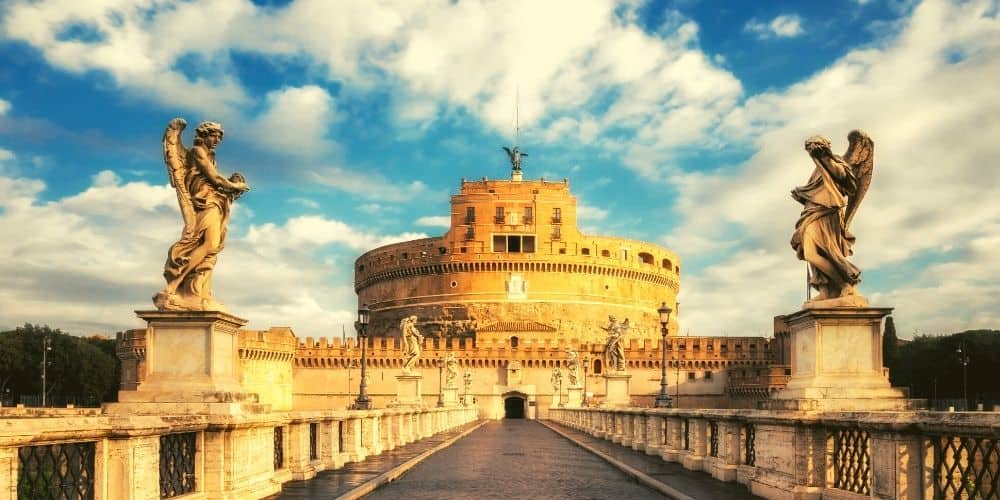
Built around 123 AD as a sepulchre for Emperor Hadrian and his family, Saint Angel Castle has accompanied the fate and history of Rome for almost two thousand years.
Also known as Hadrian's Mausoleum, is located on the right bank of the Tiber in front of the bridge Saint Angel, a short distance from the Vatican, between the Borgo and Prati districts.
During the procession organized to ward off the severe pestilence that had struck the city and was decimating its population, Pope Gregory I had a vision of the Archangel Michael that, atop the Mole Adriana, sheathing his sword. The event was interpreted as a sign from heaven announcing the end of the pestilence.
As a sign of thanks, the pope had a church dedicated to St Michael erected and a statue of the angel sheathing his sword was later placed there.
Thanks to its massive and fortified structure, the popes began to use Saint Angel Castle as a refuge, as a location for the Vatican Archives, as a sort of vault for the Church's treasury, as a court, as a prison. It is connected to the Vatican State through the fortified corridor of the "Passetto", that Nicholas III Orsini (1216-1280) had built.
Thanks to this passage, in 1494 it was made possible for Pope Alexander VI (Rodrigo Borgia) to escape from the Vatican to the castle during the invasion of Rome by the militia of Charles VIII of France, and in 1527 for Pope Clement VII (Giulio de' Medici) during the Sack of Rome by Charles V's Lansquenets.
From sepulchre to a fortress, from obscure and terrible prison to splendid Renaissance residence where Michelangelo worked within its walls, from Risorgimento prison to museum, Saint Angel Castle embodies in its spaces, in its mighty walls, in its magnificent frescoed rooms, the events of the Eternal City where past and present appear inextricably linked.
Castel Sant'Angelo: find out more about this attraction!4. Navona Square
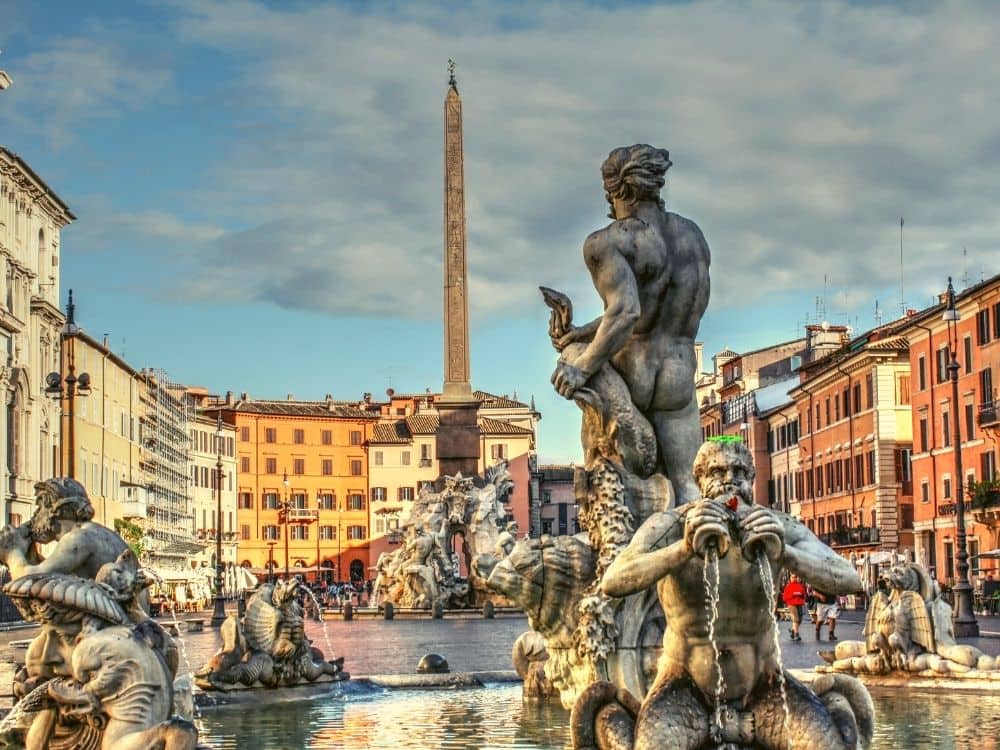
Navona Square is one of the most famous monumental squares in Rome that still retains the ancient structure of the old Domitian Stadium takes on the monumental style by the Pamphili family at the behest of Pope Innocent X to celebrate its lineage.
It is one of the most spectacular and characteristic urban complexes of Baroque Rome, with architectural and sculptural elements by Gian Lorenzo Bernini: "The Fountain of the Four Rivers" in the center of the square, representing the Danube, the Ganges, the Nile, the Rio de la Plata, the four corners of the Earth.
By Francesco Borromini and Girolamo Rainaldi is the church of Sant'Agnese in Agone, in front of the fountain by Bernini and Pietro da Cortona are the frescoes in the gallery of Palazzo Pamphilj.
Find out more about the attractions in this area!3. The Pantheon
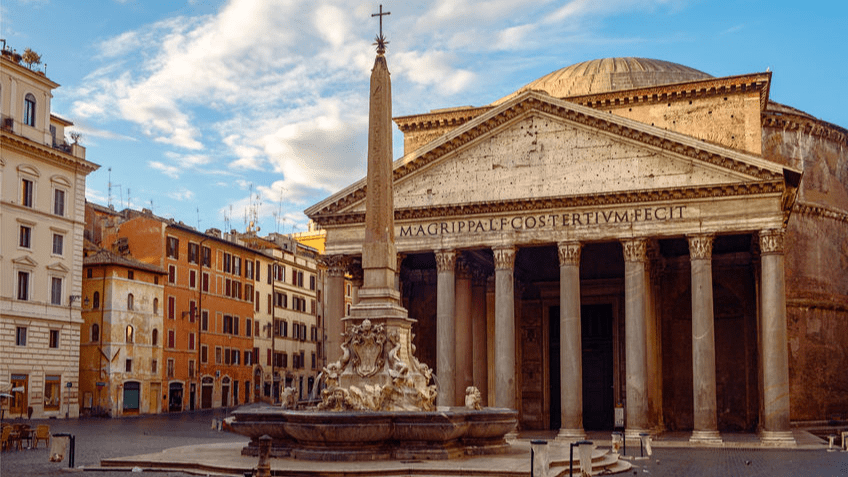
In the heart of the historic center of Rome stands the temple dedicated to all the gods, past, present, future: the Pantheon, one of the best-preserved examples of Roman architecture. It was built in 27 B.C. by Marcus Agrippa, a collaborator of the first emperor, as a sign of devotion to the seven planetary divinities. Hence the name Pantheon, which in Greek means "Of all the Gods".
It was rebuilt by Hadrian between 118 and 125 A.D. who reversed its orientation by 180 degrees and opened a large porticoed square in front of the new temple. The inhabitants of Rome popularly called it "Rotonna", the Round, from which the name of the square and the street in front of it also derives.
The Pantheon, closed and abandoned under the first Christian Emperors and later sacked by the barbarians, was donated by the Byzantine Emperor Phocas to Pope Boniface IV in 609 AD. Pope Boniface IV consecrated the temple dedicating it to Santa Maria ad Martyres.
It houses the tombs of the first two kings of Italy, Victor Emmanuel II and his son Umberto I, and was therefore chosen as one of the most important shrines of the House of Savoy.
Its majesty and structural integrity generate amazement and interest today, as in the past, of which we are left with a description, perhaps the aptest for eternal artwork:
"The most beautiful remnant of Roman antiquity is undoubtedly the Pantheon. This temple has suffered so little that it appears to us as the Romans must have seen it in their time". (Stendhal)
Basilica of Santa Maria ad Martyres: find out more about the attractions in the area!2. Venice Square
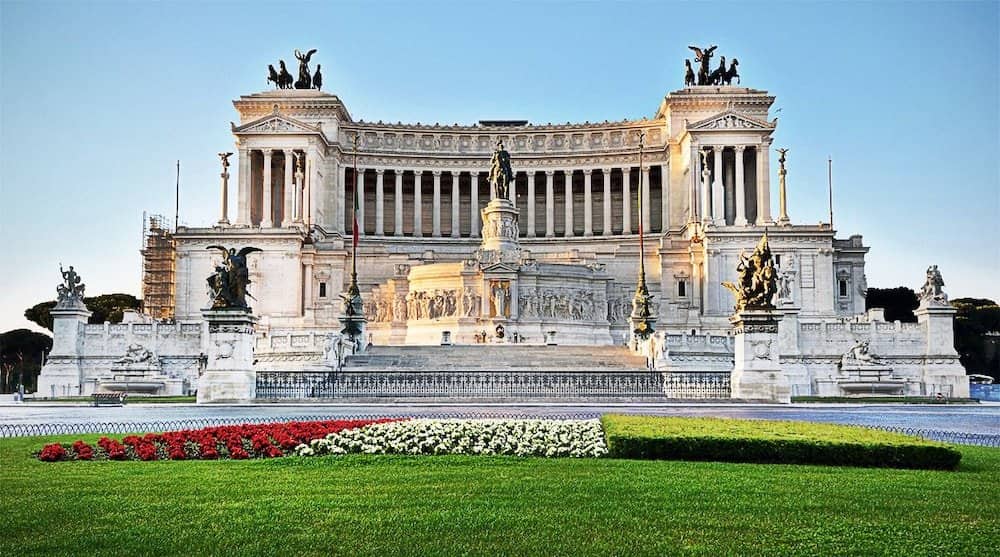
Venice Square is a famous square in Rome, located at the foot of the Campidoglio, stretching between Via del Corso and Via Dei Fori Imperiali. It takes its name from the fifteenth-century palace built by Cardinal Pietro Barbo, then donated in 1560 by Pius IV to the Republic of Venice, which made it the seat of its embassy, which is why it is still called Venice Palace.
Its shape is given by the Monument to Vittorio Emanuele II, the first king of Italy, so is also known as Vittoriano, in which, in 1921, in the crypt designed by Armando Brasini, the body of the Unknown Soldier was buried.
Because it is now considered a symbol of free, united Italy and celebrating the sacrifice for the homeland and related ideals, the monument is commonly called the Altar of the Fatherland.
As President Ciampi stated in 2003: "This monument is experiencing a new youth. We are rediscovering it as a symbol of the legacy of values that the generations of the Risorgimento entrusted to us. The foundations of these values are engraved here in marble: the unity of the homeland, the freedom of citizens”.
Since 4 November 2000, the most important symbolic ceremonies, such as the Anniversary of the Liberation of Italy on 25 April, the Feast of the Italian Republic on 2 June, the Day of National Unity, the Armed Forces on 4 November, have been held at the monument.
The Vittoriano is also an important museum for collections relating to Italian national identity: the Museo Centrale del Risorgimento and the Sacrario Delle Bandiere.
Venice Square: find out more about the attractions in this area!"Every work yields before the Amphitheatre of the Caesars, fame will now speak of one work instead of all".
1.The Colosseum
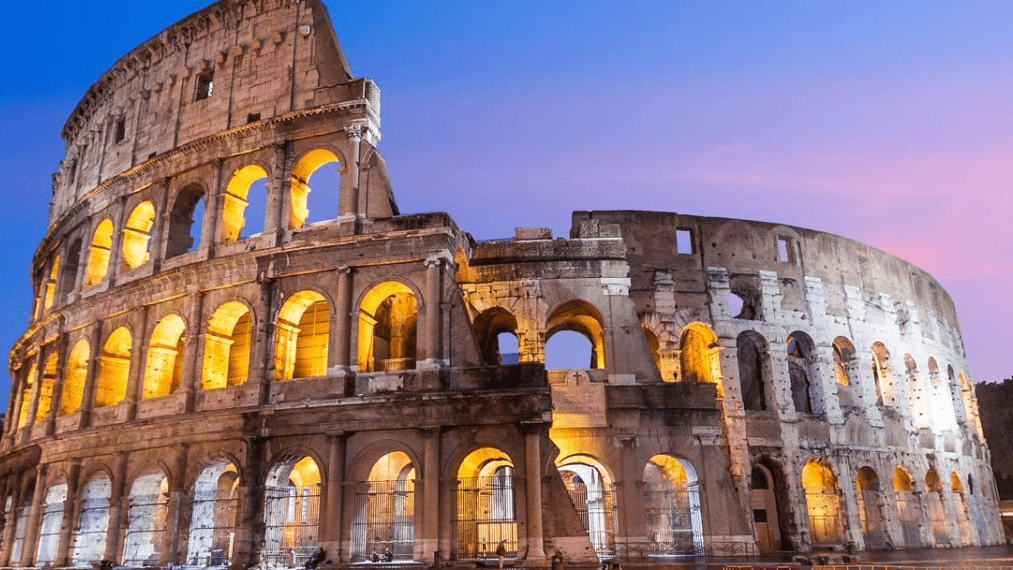
The Flavian Amphitheater, commonly called Colosseum, is today the symbol of Rome and for many the symbol of Italy. It is located in the archaeological heart of the city of Rome and attracts with its fascinating history and complex architecture.
The name Colosseum derives from a statue that stood next to it, the so-called "Colosseum of Nero". It was built in the first century A.D. at the behest of the emperors of the Flavian dynasty. It is a place where shows of great popular appeal, such as games, races, gladiator fights, took place. It is the largest Amphitheatre in the World. It is a marvellous work of engineering and architecture that went be a symbol of the "Splendour of the Empire" to a quarry during the Renaissance. At least once in your life, it is worth visiting this work of human ingenuity. If you need to have a rest after an intense tour of Rome, it will be a pleasure to be able to relax in a comfortable flat of Appartamenti MarcoAurelio49. It is located a few steps from the Colosseum. An ApartHotel inside a historic Roman building from the first half of the 20th century, right in the centre of Rome, offering unforgettable stays. Not only comfort and elegance in the building on the Celio hill but also style and liveliness for super modern flats. Colour is the absolute protagonist that gives life to the original sets, with a unique style in the centre of Rome. You will have the chance to experience the most authentic Roman experience, in the vicinity of the Amphitheatre, which was added to the UNESCO World Heritage List in 1980. In 2007 it was listed as the only European monument among the New Seven Wonders of the World, following a competition organised by the New Open World Corporation (NOWC).
Today, the Amphitheater is a monument to the works of human ingenuity that have survived the test of time, but also a place that is renewed every day, meaningful to everyone, able to tell a story to each one.
Find out more about this attraction!About the author
Written on 20/07/2021


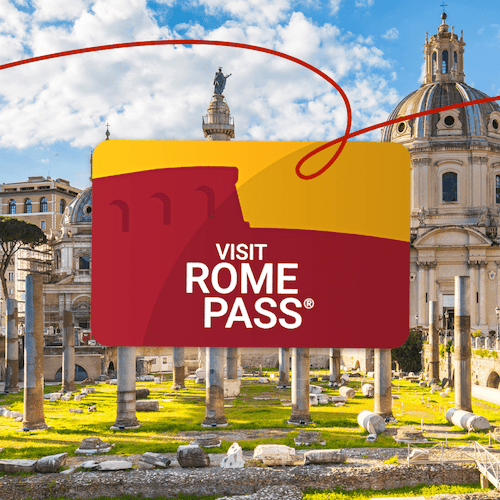
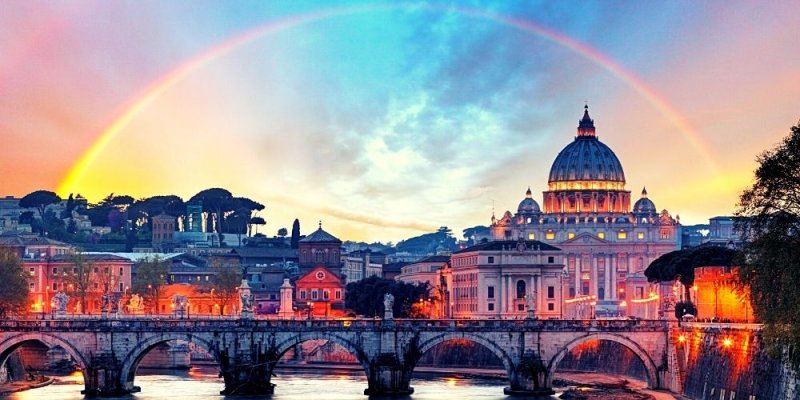
Marialuisa Monfreda
A trip to the Capital wouldn't be complete without seeing the top 10 wonders and attractions.